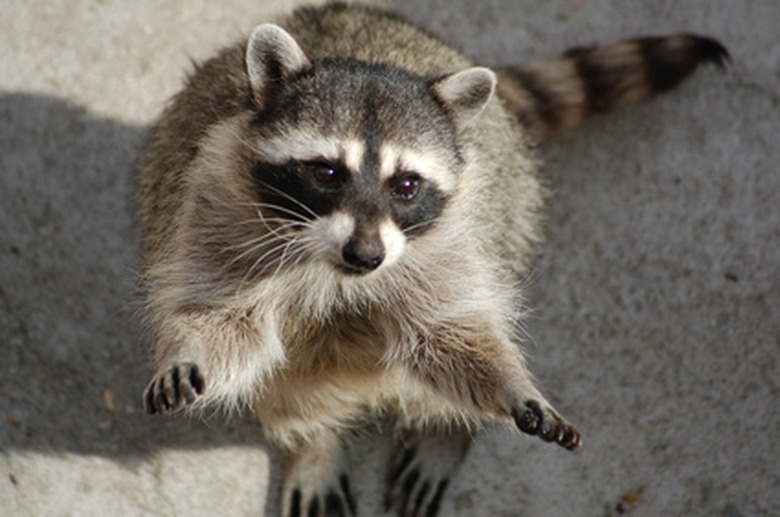How Do Raccoons Mark Territory?
Depending on your viewpoint, raccoons are either cute little critters in bandit masks or they're vermin who cause nothing but havoc and destruction. Love 'em or hate 'em, understanding their behaviour, including how raccoons designate and mark territory, will help you to either attract or repel them.
Raccoon Family Groups
According to Samuel I. Zeveloff in his book "Raccoons: A Natural History," raccoons vary their behaviour depending on various factors such as the abundance of food and water, the number of females available and the size of the territory available to them. Males tend to range further than females and usually live a solitary life unless they're banding together with a few others to increase the chances of mating. Likewise, females live alone unless they're raising a litter of kits.
Significance of Territory Marking
Raccoons communicate with each other through the scents they leave behind. A male raccoon may have a territory that covers one to three square miles, and by leaving his "calling card" he lets others know he's been around. Likewise, he'll detect the scent markers when other raccoons mark territory and be able to identify if any unfamiliar individuals have crossed his path.
Types of Territory Marking
Raccoons have paired anal glands that secrete a substance they use for territory marking by rubbing their behinds on anything they wish to claim. They also use urine and feces, both of which contain strong smells, to mark their home territory.
Favourite Territory Marking Places
Raccoons often use communal latrines, especially in areas where there are high numbers of individuals. These can be found in various places, including alongside trails, on large tree branches or stumps or by logs.
Although the exact purpose of the communal latrine is not known, it may have to do with communication between individual raccoons and serve as a way for them to become and stay aware of neighboring or overlapping territories.
In urban areas you may find you have a communal latrine in your yard, with several raccoons who drop by to use it.
Communal Latrine Solution
Once you have identified that raccoons are using your yard as their toilet, there are several ways to discourage the behaviour.
One way is to cover the area with plastic. Raccoons like a dry surface that gives plenty of grip, so the slippery surface of the plastic won't be attractive to them, according to the Toronto Wildlife Center. Another thing to try is soaking the area repeatedly, or buying a motion-sensitive sprinkler, or "scarecrow," to squirt any intruding raccoon.
References
- "Raccoons: A Natural History"; Samuel I. Zeveloff; 2002
- Torronto Wildlife Center: Wildlife Hotline
Cite This Article
MLA
Jones, Deborah. "How Do Raccoons Mark Territory?" sciencing.com, https://www.sciencing.com/do-raccoons-mark-territory-6576799/. 22 November 2019.
APA
Jones, Deborah. (2019, November 22). How Do Raccoons Mark Territory?. sciencing.com. Retrieved from https://www.sciencing.com/do-raccoons-mark-territory-6576799/
Chicago
Jones, Deborah. How Do Raccoons Mark Territory? last modified March 24, 2022. https://www.sciencing.com/do-raccoons-mark-territory-6576799/
